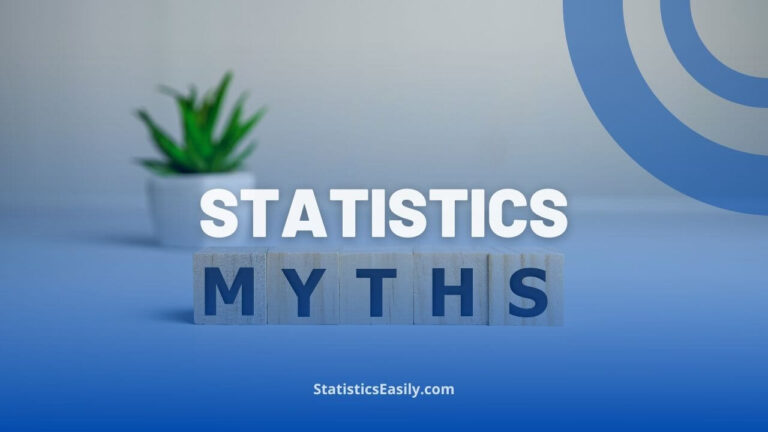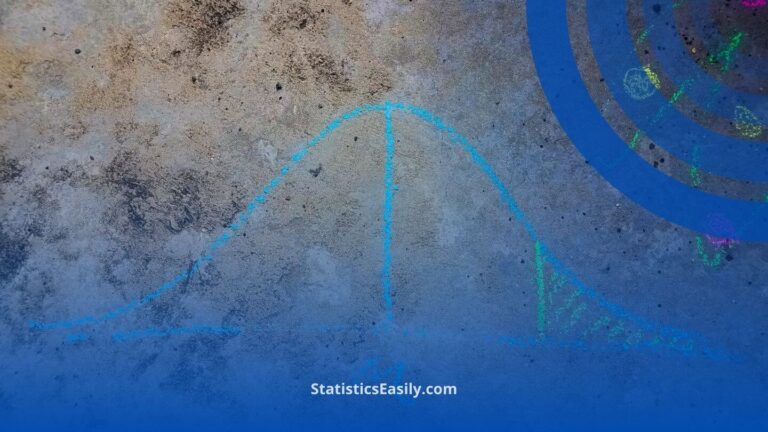5 Statistics Case Studies That Will Blow Your Mind
You will learn the transformative impact of statistical science in unfolding real-world narratives from global economics to public health victories.
Introduction
The untrained eye may see only cold, lifeless digits in the intricate dance of numbers and patterns that constitute data analysis and statistics. Yet, for those who know how to listen, these numbers whisper stories about our world, our behaviors, and the delicate interplay of systems and relationships that shape our reality. Artfully unfolded through meticulous statistical analysis, these narratives can reveal startling truths and unseen correlations that challenge our understanding and broaden our horizons. Here are five case studies demonstrating the profound power of statistics to decode reality’s vast and complex tapestry.
Highlights
- 2008 Financial Crisis: Regression analysis showed Lehman Brothers’ collapse rippled globally, causing a credit crunch and recession.
- Eradication of Guinea Worm Disease: Geospatial and logistic regression helped reduce cases from 3.5 million to 54 by 2019.
- Amazon’s Personalized Marketing: Machine learning algorithms predict customer preferences, drive sales, and set industry benchmarks for personalized shopping.
- American Bald Eagle Recovery: Statistical models and the DDT ban led to the recovery of the species, once on the brink of extinction.
- Twitter and Political Polarization: MIT’s sentiment analysis of tweets revealed echo chambers, influencing political discourse and highlighting the need for algorithm transparency.
1. The Butterfly Effect in Global Markets: The 2008 Financial Crisis
The 2008 financial crisis is a prime real-world example of the Butterfly Effect in global markets. What started as a crisis in the housing market in the United States quickly escalated into a full-blown international banking crisis with the collapse of the investment bank Lehman Brothers on September 15, 2008.
Understanding the Ripples
A team of economists employed regression analysis to understand the impact of the Lehman Brothers collapse. The statistical models revealed how this event affected financial institutions worldwide, causing a credit crunch and a widespread economic downturn.
The Data Weaves a Story
Further analysis using time-series forecasting methods painted a detailed picture of the crisis’s spread. For instance, these models were used to predict how the initial shockwave would impact housing markets globally, consumer spending, and unemployment rates. These forecasts proved incredibly accurate, showcasing not only the domino effect of the crisis but also the predictive power of well-crafted statistical models.
Implications for Future Predictions
This real-life event became a case study of the importance of understanding the deep connections within the global financial system. Banks, policymakers, and investors now use the predictive models developed from the 2008 crisis to stress-test economic systems against similar shocks. It has led to a greater appreciation of risk management and the implementation of stricter financial regulations to safeguard against future crises.
By interpreting the unfolding of the 2008 crisis through the lens of statistical science, we can appreciate the profound effect that one event in a highly interconnected system can have. The lessons learned continue to resonate, influencing financial policies and the global economic forecasting and stability approach.
2. Statistical Fortitude in Public Health: The Eradication of Dracunculiasis (Guinea Worm Disease)
In a world teeming with infectious diseases, the story of dracunculiasis, commonly known as Guinea Worm Disease, is a testament to public health tenacity and the judicious application of statistical analysis in disease eradication efforts.
Tracing the Path of the Parasite
The campaign against dracunculiasis, led by The Carter Center and supported by a consortium of international partners, utilized epidemiological data to trace and interrupt the life cycle of the Guinea worm — the statistical approach underpinning this public health victory involved meticulously collecting data on disease incidence and transmission patterns.
The Tally of Triumph
By employing geospatial statistics and logistic regression models, health workers pinpointed endemic villages and formulated strategies that targeted the disease’s transmission vectors. These statistical tools were instrumental in monitoring the progress of eradication efforts and allocating resources to areas most in need.
The Countdown to Zero
The eradication campaign’s success was measured by the continuous decline in cases, from an estimated 3.5 million in the mid-1980s to just 54 reported cases in 2019. This dramatic decrease has been documented through rigorous data collection and statistical validation, ensuring that each reported case was accounted for and dealt with accordingly.
Legacy of a Worm
The nearing eradication of Guinea Worm Disease, with no vaccine or curative treatment, is a feat that underscores the power of preventive public health strategies informed by statistical analysis. It serves as a blueprint for tackling other infectious diseases. It is a real-world example of how statistics can aid in making the invisible enemy of disease a known and conquerable foe.
The narrative of Guinea Worm eradication is not just a tale of statistical victory but also one of human resilience and commitment to public health. It is a story that will continue to inspire as the world edges closer to declaring dracunculiasis the second human disease, after smallpox, to be eradicated.
3. Unraveling the DNA of Consumer Behavior: A Case Study of Amazon’s Personalized Marketing
The advent of big data analytics has revolutionized marketing strategies by providing deep insights into consumer behavior. Amazon, a global leader in e-commerce, is at the forefront of leveraging statistical analysis to offer its customers a highly personalized shopping experience.
The Predictive Power of Purchase Patterns
Amazon collects vast user data, including browsing histories, purchase patterns, and product searches. Amazon analyzes this data by employing machine learning algorithms to predict individual customer preferences and future buying behavior. This predictive power is exemplified by Amazon’s recommendation engine, which suggests products to users with uncanny accuracy, often leading to increased sales and customer satisfaction.
Beyond the Purchase: Sentiment Analysis
Amazon extends its data analysis beyond purchases by analyzing customer reviews and feedback sentiment. This analysis gives Amazon a nuanced understanding of customer sentiments towards products and services. Amazon can quickly address issues, improve product offerings, and enhance customer service by mining text for customer sentiment.
Crafting Tomorrow’s Trends Today
Amazon’s data analytics insights are not limited to personalizing the shopping experience. They are also used to anticipate and set future trends. Amazon has mastered the art of using consumer data to meet existing demands and influence and create new consumer needs. By analyzing emerging patterns, Amazon stocks products ahead of demand spikes and develops new products that align with predicted consumer trends.
Amazon’s success in utilizing statistical analysis for marketing is a testament to the power of big data in shaping the future of consumer engagement. The company’s ability to personalize the shopping experience and anticipate consumer trends has set a benchmark in the industry, illustrating the transformative impact of statistics on marketing strategies.
4. The Revival of the American Bald Eagle: A Triumph of Environmental Policy and Statistics
In the annals of environmental success stories, the recovery of the American Bald Eagle (Haliaeetus leucocephalus) from extinction stands out as a sterling example of how rigorous science, public policy, and statistics can combine to safeguard wildlife. This case study offers a narrative that encapsulates the meticulous application of data analysis in wildlife conservation, revealing a more profound truth about the interdependence of species and the human spirit’s capacity for stewardship.
The Descent Towards Silence
By the mid-20th century, the American Bald Eagle, a symbol of freedom and strength, faced decimation. Pesticides like DDT, habitat loss, and illegal shooting had dramatically reduced their numbers. The alarming descent prompted an urgent call to action bolstered by the rigorous collection and analysis of ecological data.
The Statistical Lifeline
Biostatisticians and ecologists began a comprehensive monitoring program, recording eagle population numbers, nesting sites, and chick survival rates. Advanced statistical models, including logistic regression and population viability analysis (PVA), were employed to assess the eagles’ extinction risk under various scenarios and to evaluate the effectiveness of different conservation strategies.
The Ban on DDT – A Calculated Decision
A pivotal moment in the Bald Eagle’s story was the ban on DDT in 1972, a decision grounded in the statistical analysis of the pesticide’s impacts on eagle reproduction. Studies demonstrated a strong correlation between DDT and thinning eggshells, leading to reduced hatching rates. Based on this analysis, the ban’s implementation marked the turning point for the eagle’s fate.
A Soaring Recovery
Post-ban, rigorous monitoring continued, and the data collected painted a story of resilience and recovery. The statistical evidence was undeniable: eagle populations were rebounding. As of the early 21st century, the Bald Eagle had made a miraculous comeback, removed from the Endangered Species List in 2007.
The Legacy of a Species
The American Bald Eagle’s resurgence is more than a conservation narrative; it’s a testament to the harmony between humanity’s analytical prowess and its capacity for environmental guardianship. It shows how statistics can forecast doom and herald a new dawn for conservation. This case study epitomizes the beautiful interplay between human action, informed by truth and statistical insight, resulting in a tangible good: the return of a majestic species from the shadow of extinction.
5. The Algorithmic Mirrors of Social Media – The Case of Twitter and Political Polarization
Social media platforms, particularly Twitter, have become critical arenas for public discourse, shaping societal norms and reflecting public sentiment. This case study examines the real-world application of statistical models and algorithms to understand Twitter’s role in political polarization.
Twitter’s Data-Driven Sentiment Reflection
The aim was to analyze Twitter data to evaluate public sentiment regarding political events and understand the platform’s contribution to societal polarization.
Using natural language processing (NLP) and sentiment analysis, researchers from the Massachusetts Institute of Technology (MIT) analyzed over 10 million tweets from the period surrounding the 2020 U.S. Presidential Election. The tweets were filtered using politically relevant hashtags and keywords.
Deciphering the Digital Pulse
A sentiment index was created, categorizing tweets into positive, negative, or neutral sentiments concerning the candidates. This ‘Twitter Political Sentiment Index’ provided a temporal view of public mood swings about key campaign events and debates.
The Echo Chambers of the Internet
Network analysis revealed distinct user clusters along ideological lines, illustrating the presence of echo chambers. The study examined retweet networks and highlighted how information circulated within politically homogeneous groups, reinforcing existing beliefs.
The study showed limited user exposure to opposing political views on Twitter, increasing polarization. It also correlated significant shifts in the sentiment index with real-life events, such as policy announcements and election results.
Shaping the Future of Public Discourse
The study, published in Science, emphasizes the need for transparency in social media algorithms to mitigate echo chambers’ effects. The insights gained are being used to inform policymakers and educators about the dynamics of online discourse and to encourage the design of algorithms that promote a more balanced and open digital exchange of ideas.
The findings from MIT’s Twitter data analysis underscore the platform’s power as a real-time barometer of public sentiment and its role in shaping political discourse. The case study offers a roadmap for leveraging big data to foster a healthier democratic process in the digital age.
Conclusion
Drawing together these varied case studies, it becomes clear that statistics and data analysis are far from mere computation tools. They are, in fact, the instruments through which we can uncover deeper truths about our world. They can illuminate the unseen, predict the future, and help us shape it towards the common good. These narratives exemplify the pursuit of true knowledge, promoting good actions, and appreciating a beautiful world.
As we engage with the data of our daily lives, we continually decode the complexities of existence. From the markets to the microorganisms, consumer behavior to conservation efforts, and the physical to the digital world, statistics is the language in which the tales of our times are written. It is the language that reveals the integrity of systems, the harmony of nature, and the pulse of humanity. Through this science’s meticulous and ethical application, we uphold the values of truth, goodness, and beauty — ideals that remain ever-present in the quest for understanding and improving the world we share.
Recommended Articles
Curious about the untold stories behind the numbers? Dive into our blog for more riveting articles that showcase the transformative power of statistics in understanding and shaping our world. Continue your journey into the beauty of data-driven truths with us.
- Music, Tea, and P-Values: Impossible Results and P-Hacking
- Statistical Fallacies and the Perception of the Mozart Effect
- How Data Visualization in the Form of Pie Charts Saved Lives
Frequently Asked Questions
Q1: What is the significance of the 2008 Financial Crisis in statistics? The 2008 Financial Crisis is significant in statistics for demonstrating the Butterfly Effect in global markets, where regression analysis revealed the interconnected impact of Lehman Brothers’ collapse on the global economy.
Q2: How did statistics contribute to the eradication of Guinea Worm Disease? Through geospatial and logistic regression, statistics played a crucial role in tracking and reducing the spread of Guinea Worm Disease, contributing to the decline from 3.5 million cases to just 54 by 2019.
Q3: What role does machine learning play in Amazon’s marketing? Machine learning algorithms at Amazon analyze vast amounts of consumer data to predict customer preferences and personalize the shopping experience, driving sales and setting industry benchmarks.
Q4: How were statistics instrumental in the recovery of the American Bald Eagle? Statistical models helped assess the risk of extinction and the impact of DDT on eagle reproduction, leading to conservation strategies that aided in the eagle’s significant recovery.
Q5: What is sentiment analysis, and how was it used in studying Twitter? Sentiment analysis uses natural language processing to categorize the tone of text content. MIT used it to evaluate political sentiment on Twitter and study the platform’s role in political polarization.
Q6: How did statistical models predict the global effects of the 2008 crisis? Statistical models, including time-series forecasting, predicted how the crisis would affect housing markets, consumer spending, and unemployment, demonstrating the predictive power of statistics.
Q7: Why is the eradication of Guinea Worm Disease significant beyond public health? The near eradication, without a vaccine or cure, illustrates the power of preventive strategies and statistical analysis in public health, serving as a blueprint for combating other diseases.
Q8: In what way did statistics aid in the decision to ban DDT? Statistical analysis linked DDT to thinning eagle eggshells and poor hatching rates, leading to the ban crucial for the Bald Eagle’s recovery.
Q9: How does Amazon’s use of data analytics influence consumer behavior? By analyzing consumer data, Amazon anticipates and sets trends, meets demands, and influences new consumer needs, shaping the future of consumer engagement.
Q10: What implications does the Twitter political polarization study have? The study calls for transparency in social media algorithms to reduce echo chambers. It suggests using statistical insights to foster a balanced, open digital exchange in democratic processes.








